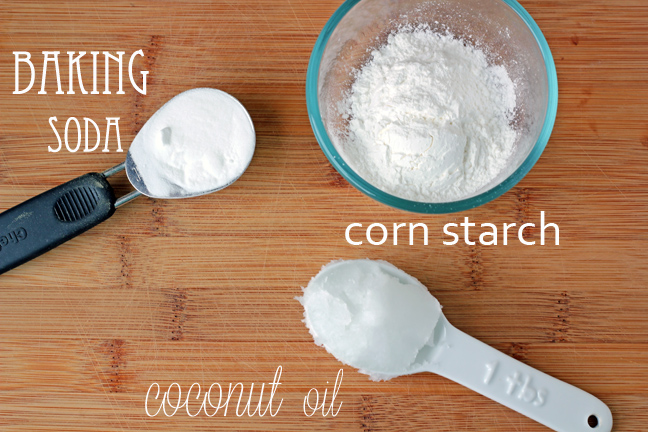Baking soda isn’t just a magic ingredient in all sorts of recipes, helping cakes rise and making traditional Irish bread recipes fluffy. It has all sorts of uses around the house and in your personal care routine. These 10 natural beauty and cleaning recipes put sodium bicarbonate’s fine-grit texture and odor-absorbing properties to work for everything from tooth whitening to scrubbing ovens.
Natural Deodorant
Baking soda’s odor-absorbing properties make it ideal as the basis for a natural, aluminum-free deodorant. Check out a simple recipe at In Sonnet’s Kitchen that mixes it with corn starch to control moisture and anti-microbial coconut oil. Add a few drops of essential oil to customize it to your preferences.
Soothing Foot Soak
Add 2-3 tablespoons of baking soda to a tub of warm water, along with the essential oils of your choice, for a skin-softening foot soak. Mix a little bit more baking soda with just enough water to create a paste and scrub any trouble spots on your feet, sloughing away dead skin.
Teeth Whitening
Commercial whitening treatments can cause painful sensitivity – not to mention the fact that they’re pretty pricey. Baking soda is gentle yet effective at scrubbing away stains on the teeth, and it’s safe enough to use daily. Just add a little bit to your toothpaste, use it alone or mix it with lemon juice for extra whitening power (image via Bookis Smuin/Flickr Creative Commons).
Natural Oven Cleaner
Nobody wants their entire house – yet alone their food – to smell like oven cleaner, yet that’s often exactly what happens after using a bottle of the conventional store-bought stuff. Believe it or not, baking soda can eliminate even the toughest baked-on gunk without even requiring any elbow grease. Just spritz the inside of the oven with a water bottle to get it nice and damp, pour on a thick layer of baking soda and walk away for a few hours. Then, simply wipe out the softened mess.
Mildew Preventative
Eliminate and prevent mildew in the bathroom, on your patio furniture and even directly on the plants in your garden with baking soda. Make a paste of it with water and scrub away existing mildew on hard surfaces, and sprinkle it under the cushions on your outdoor chairs to keep it from growing in the first place. Four teaspoons of baking soda added to a bottle of water and sprayed on the plants in your garden can prevent and stop tomato blight, powdery mildew and other moisture-related problems.
Laundry Booster
Boost the power of your laundry detergent by adding 1/2 cup of baking soda to each load, which will help to regulate the pH level, reduce bacteria and eliminate odors. You can even draw unpleasant smells out of garments and textiles that aren’t washable by placing them in a sealed container with an open box of baking soda for 24-48 hours (image via peppysis/Flickr Creative Commons).
Deep Pore Scrub
Forget pore strips – the best way to banish blackheads is right in your pantry. Mix a bit of baking soda with your regular face wash, or with coconut oil if your skin tends to be dry, and use your fingers to rub the paste into your skin in small circular motions. It’ll sweep all of that gunk right out of your pores and leave your skin feeling ultra-smooth.
Shoe Deodorizer
Pour some baking soda into a pair of paper coffee filters, tie them off with rubber bands and place them inside any offensive-smelling shoes to make them smell almost like new again.
Chemical-Free Drain Cleaner
Clear clogged drains without resorting to nasty-smelling bottled potions that can be harmful to the water supply. Just pour half a cup of baking soda down the drain, chase it with half a cup of white vinegar, cover the drain with a wet cloth and wait at least five minutes. Then, flush it out with hot water (steaming, not boiling, to avoid damaging PVC pipes.)
All-Purpose Surface Scrub
Kitchen counters, dingy bathtubs, cloudy glass doors and all sorts of other surfaces can be brought to a shine in minutes with a DIY soft scrub made from baking soda, castile soap, water and vinegar. Get the recipe from Dr. Karen S. Lee.


